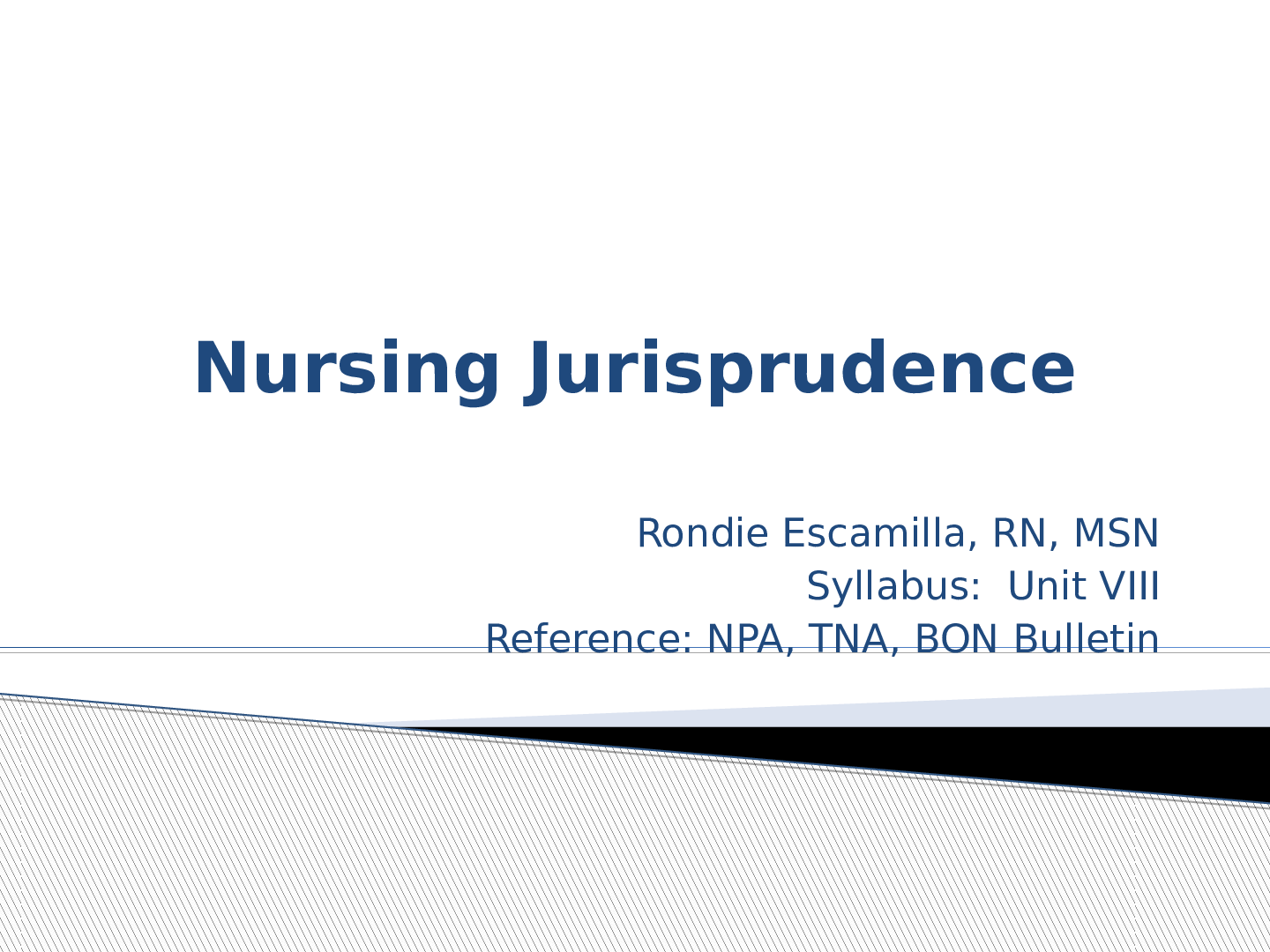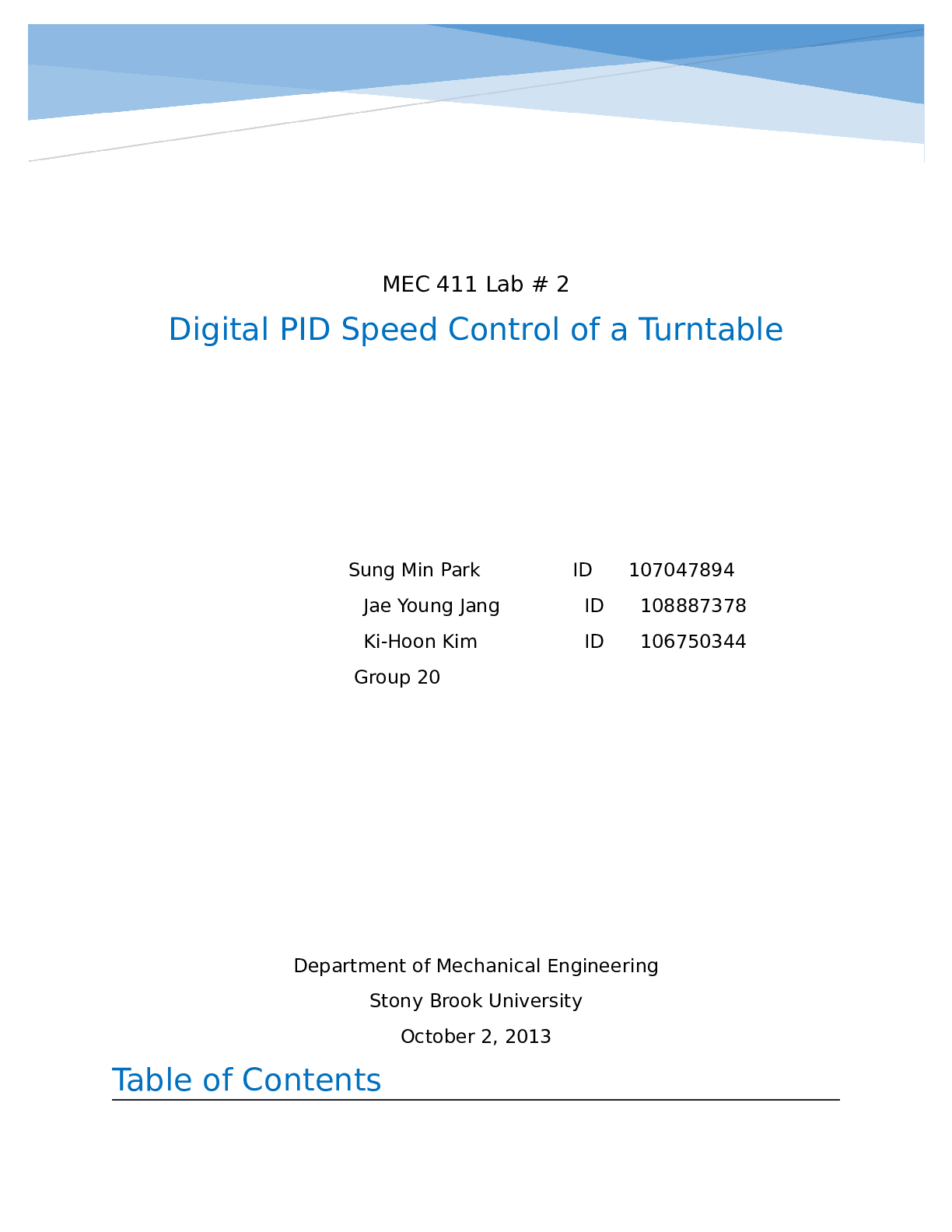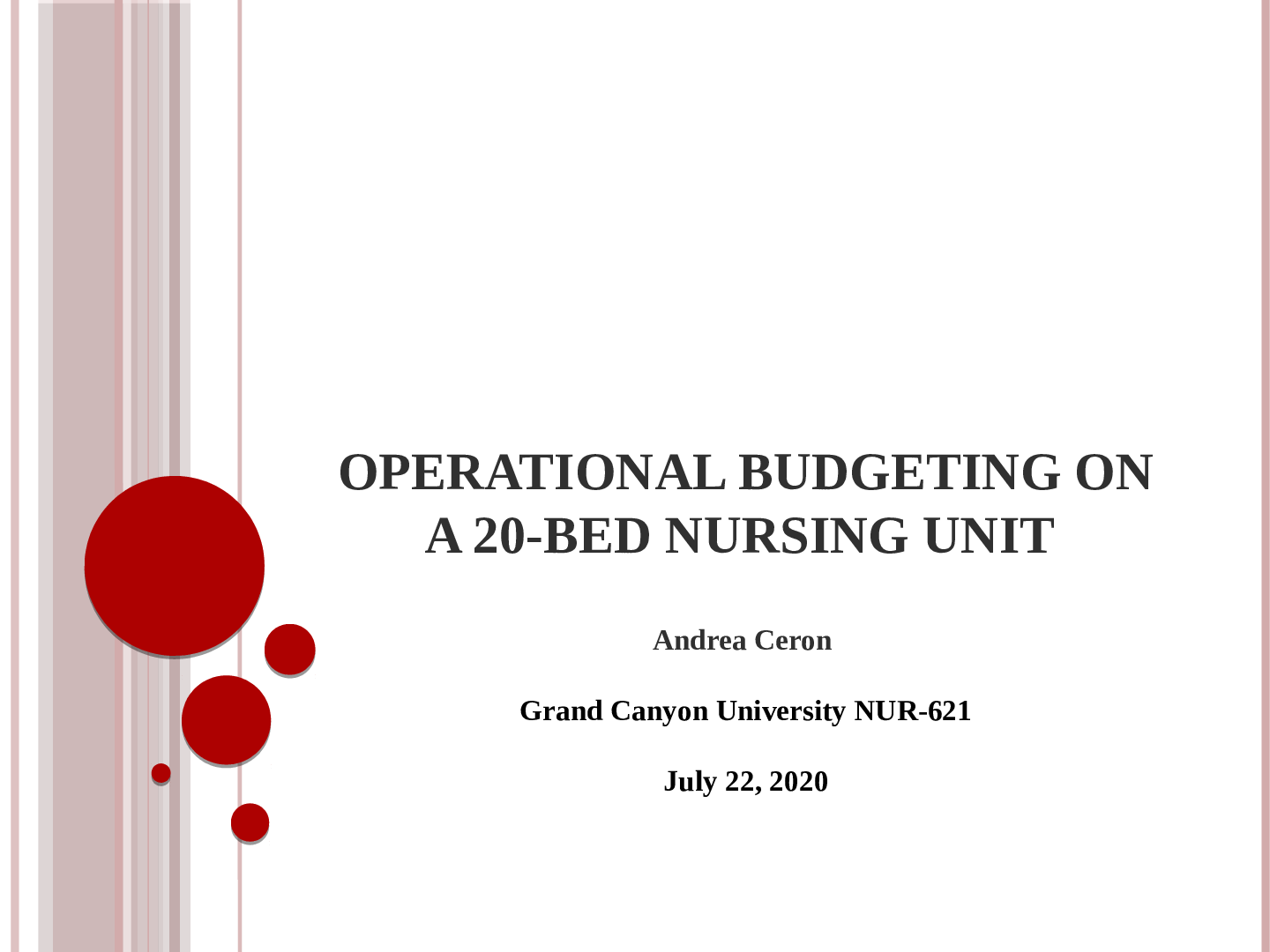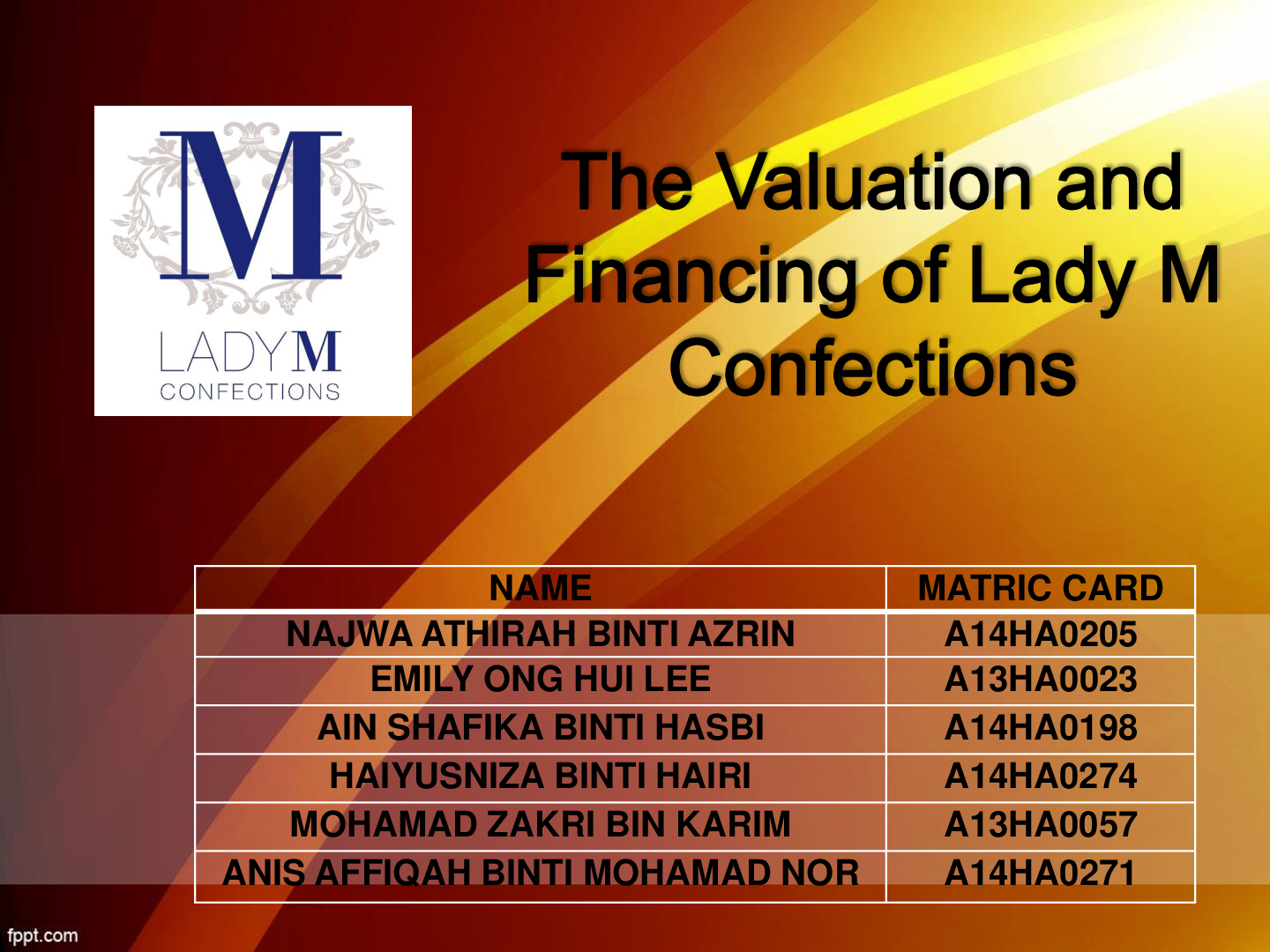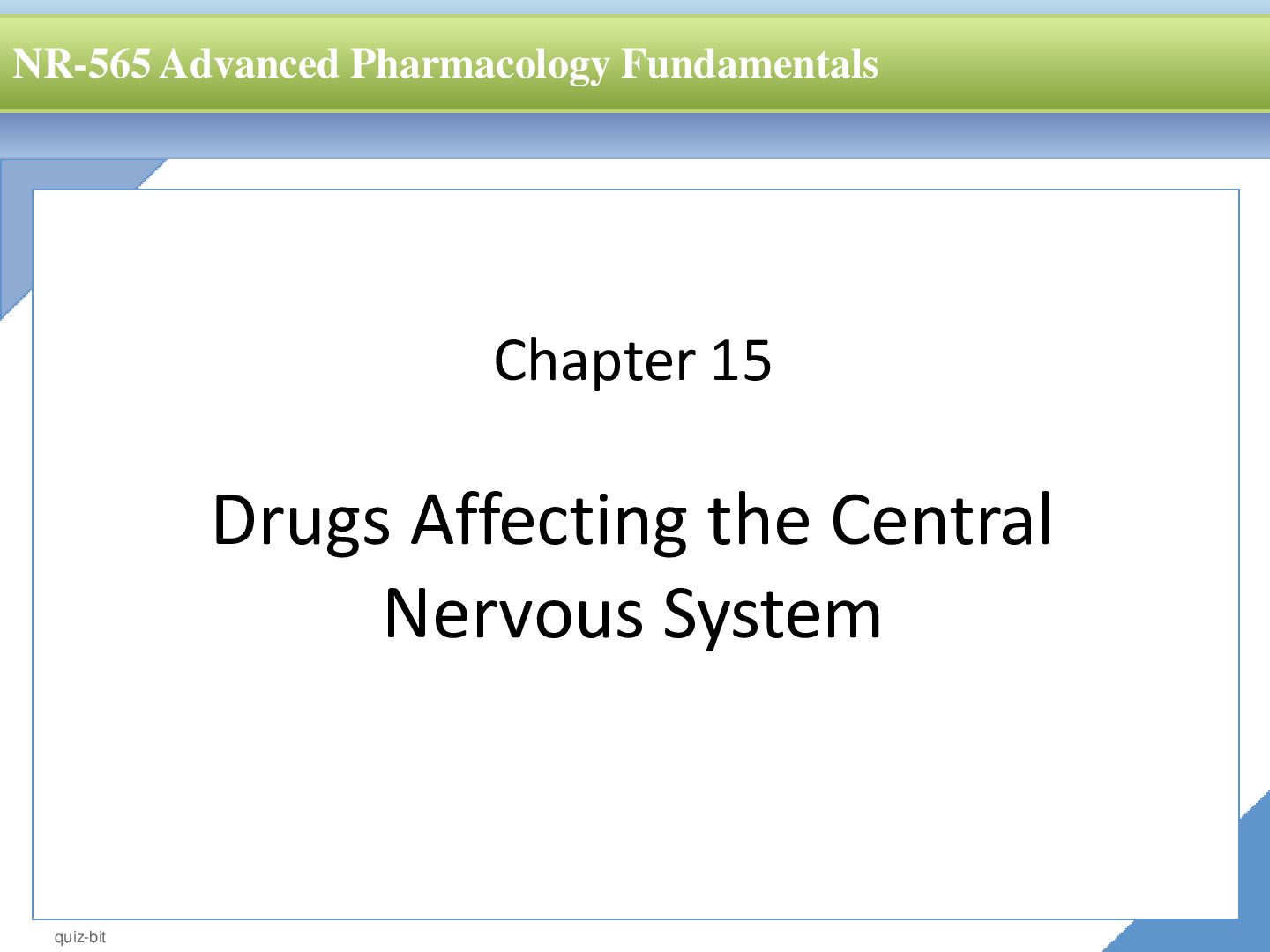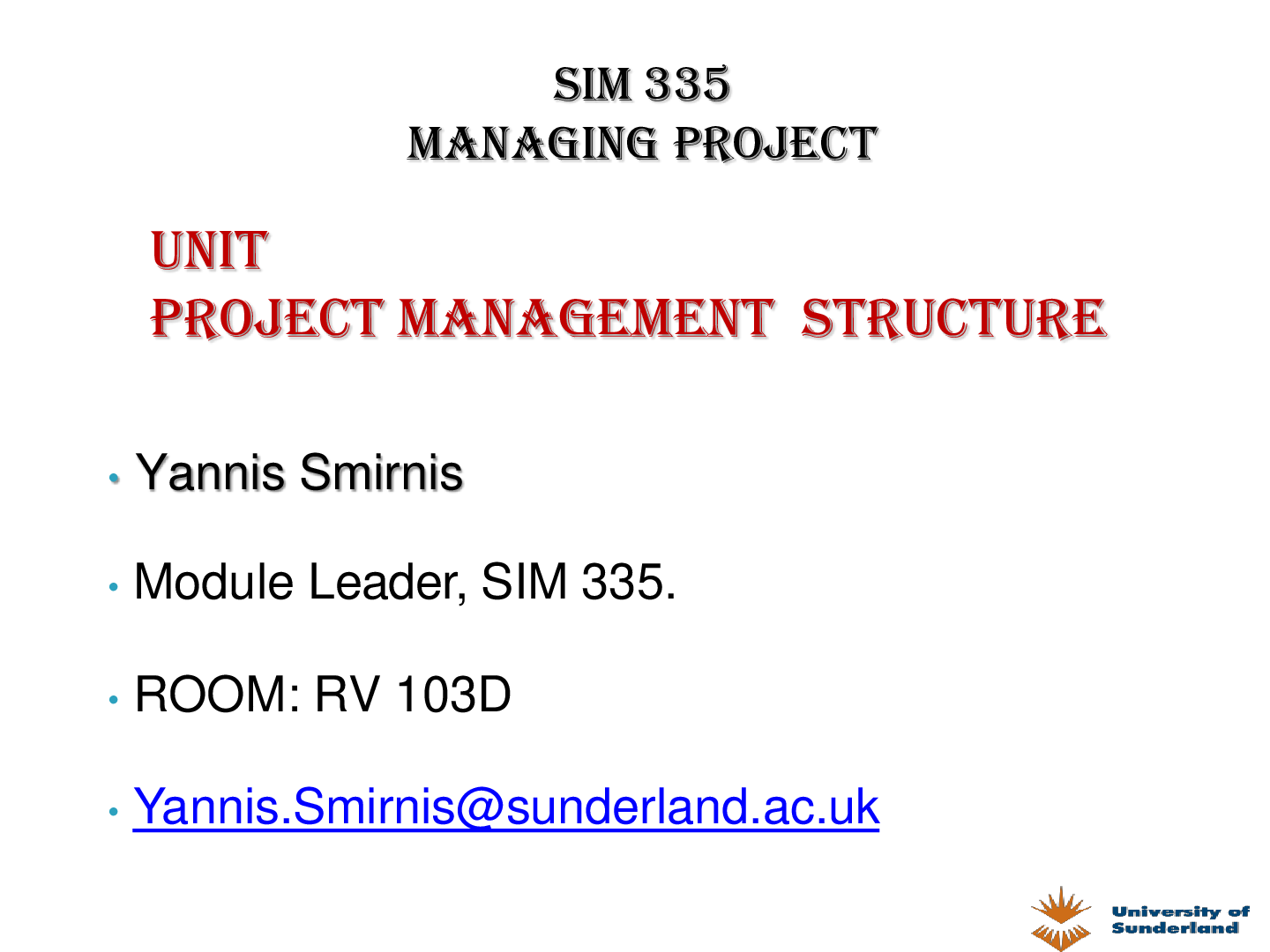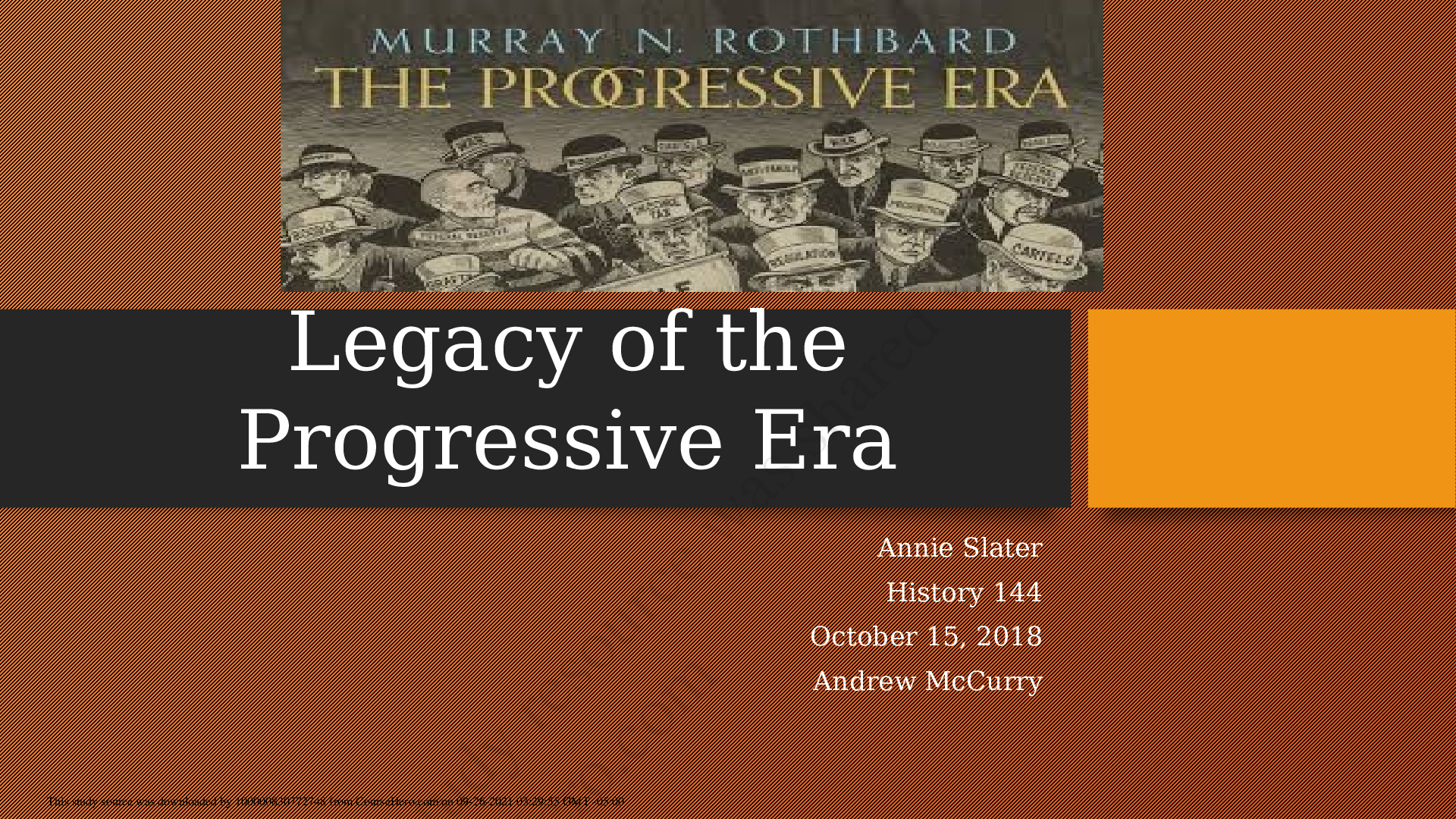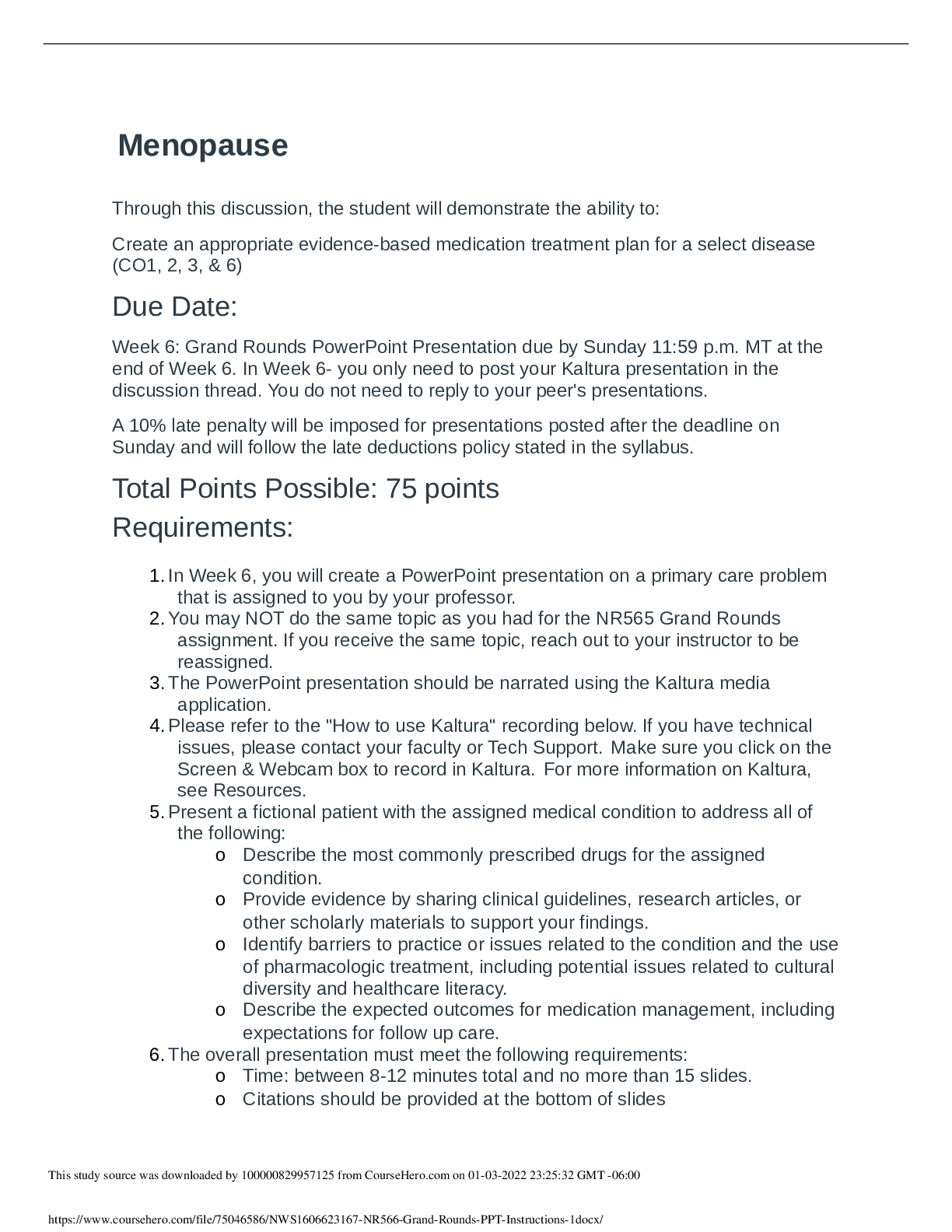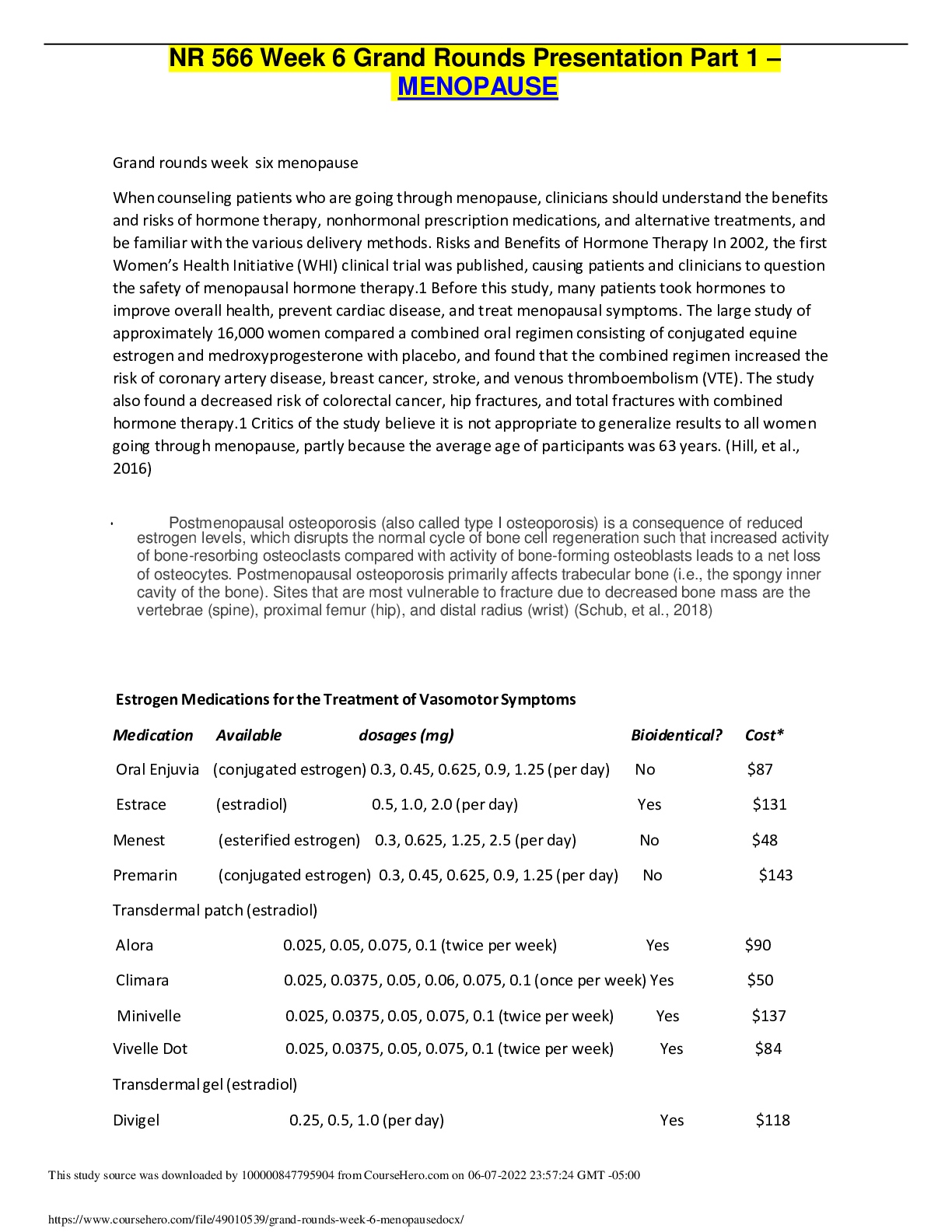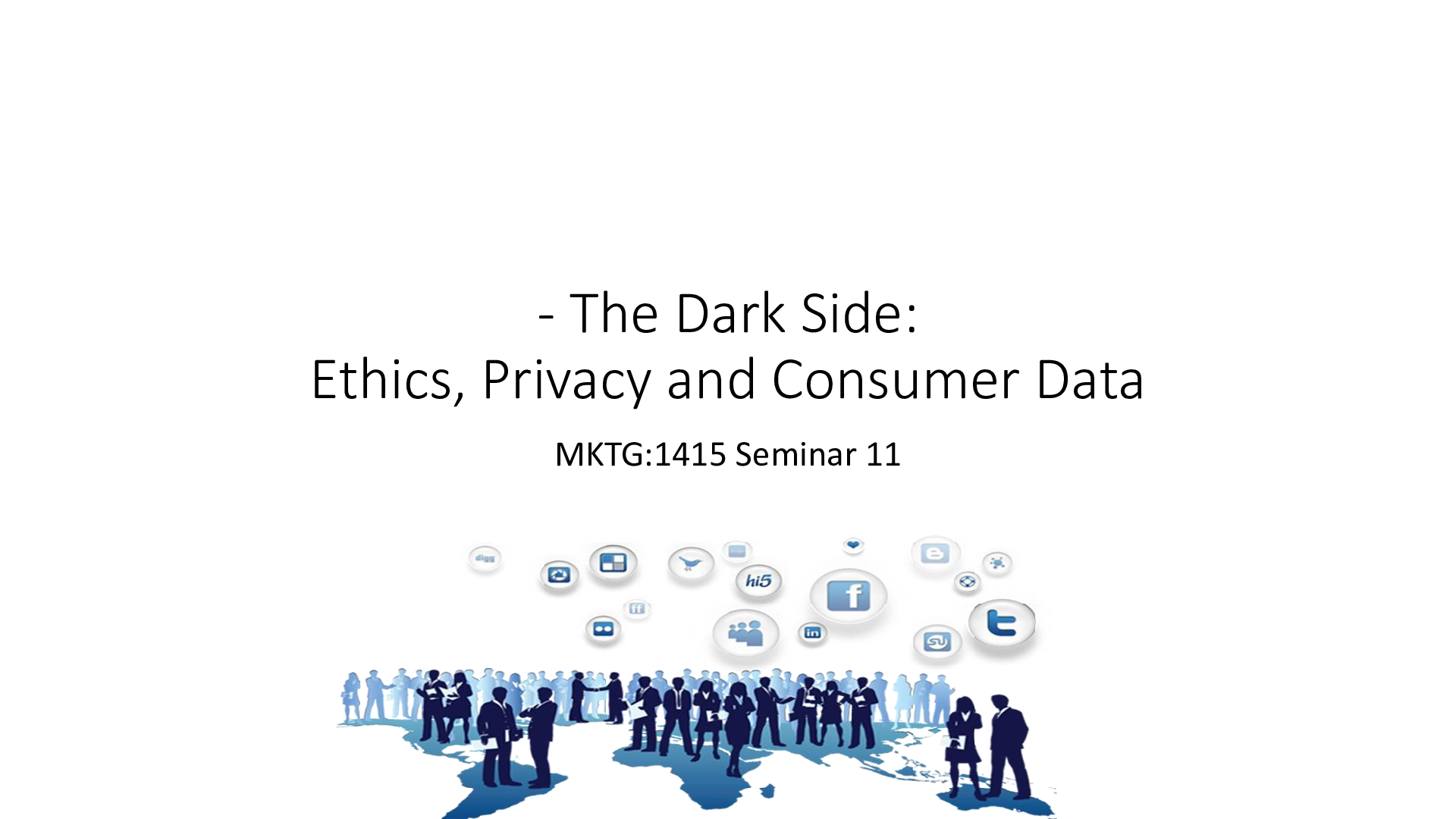Physics > Presentation > Stony Brook University MEC 411 fnukarmanorbu (All)
Stony Brook University MEC 411 fnukarmanorbu
Document Content and Description Below
Lab #2 - PID Speed Control of a Turntable Mec 411 Professor Noah Machtay Group #31 Group Members Run Jing Li - 109368108 Han Ku Nam - 110146168 Tarek Neshiewat - 109454229 Dates of Lab: Octobe... r 5 & 12, 2016 Due Date: November 2, 2016 2 Table of Contents I. Abstract page 3 II. Introduction page 3 III. Experimental Procedure page 21 IV. Results page 23 V. Discussion page 31 VI. Conclusion page 34 VII. References page 36 VIII. Appendix page 37 I. Abstract: In this laboratory experiment, an implementation of PID turntable speed control system that satisfied certain performance specifications was studied and approached [5]. The targeted objective specifications in the design were, Percentage overshoot is to be less than 10%, Settling 3 time to within 2% of the final value is to be less than 500ms, and Rise time is to be less than 200ms. To satisfy such specification, the input parameters, KC, Ti, Td, (proportional, integral, and derivative parameters) were adjusted manually to achieve the targeted state. This system implementation required a building of an analog circuit of the PID controller connected to a waveform generator and the DC motor with tachometer. Then, the actual speed of the turntable was measured by the tachometer. With an oscilloscope connected to the circuit at certain nodes, data was obtained, modeled and collected through the Agilent Technologies software. From the Agilent software, the data was extracted to excel. Finally, the experimental data through manual controlling was observed and compared to the theoretical values produced by MATLAB. This experiment found the corrected theoretical values did not meet the design specification of the PID controller but it is much closer to meeting the requirements compared to the non-corrected values. II. Introduction: A proportional-integral-derivative controller, as known as the PID controller, is a generic control loop feedback mechanism widely used in industrial control systems. As the name implies, a PID controller is a controller that includes elements with those three functions. The proportional element is referred to as the “P element,” the integral element as the “I element,” and the derivative element as the “D element.” The PID controller was first placed on the market in 1939 and has remained the most widely used controller in process control because of its simplicity, cost-friendly, and the great usage in the industrial background. An investigation performed in 1989 in Japan indicated that more than 90% of the controllers used in process industries are PID controllers and advanced versions of the PID controller. [5] 4 The way how it works is that it uses a feedback control method to analyze the data, feed it back to the control, and analyze it more, and feed it again to the control to maximize the stability. Figure 1. Conventional Feedback Control System [1] [Show More]
Last updated: 1 year ago
Preview 1 out of 40 pages

Reviews( 0 )
Document information
Connected school, study & course
About the document
Uploaded On
Nov 04, 2022
Number of pages
40
Written in
Additional information
This document has been written for:
Uploaded
Nov 04, 2022
Downloads
0
Views
41

